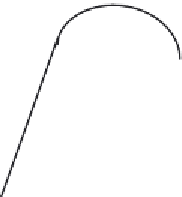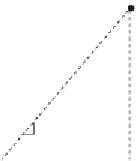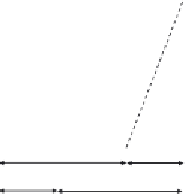Civil Engineering Reference
In-Depth Information
crack: some mesh sensitivity remains because of this effect, and elements that
have aspect ratios close to one are recommended.
Modelers can define the stress-strain behavior of plain concrete in uni-
axial compression outside the elastic range. Compressive stress data are pro-
vided as a tabular function of inelastic (or crushing) strain,
e
in
, and, if desired,
strain rate, temperature, and field variables. Positive (absolute) values should
be given for the compressive stress and strain. The stress-strain curve can be
defined beyond the ultimate stress, into the strain-softening regime. Hard-
ening data are given in terms of an inelastic strain,
e
in
, instead of plastic strain,
e
pl
. The compressive inelastic strain is defined as the total strain minus the
elastic strain corresponding to the undamaged material,
e
in
el
, where
¼e
c
e
oc
el
e
oc
specified in tabular form. (If damage is not specified, the model behaves
as a plasticity model; consequently,
e
t
pl
¼e
in
.) In ABAQUS
[1.29], the damage variables are treated as nondecreasing material point
quantities. At any increment during the analysis, the new value of each dam-
age variable is obtained as the maximum between the value at the end of the
previous increment and the value corresponding to the current state (inter-
polated from the user-specified tabular data). The choice of the damage
properties is important since, generally, excessive damage may have a critical
effect on the rate of convergence. It is recommended to avoid using values of
the damage variables above 0.99, which corresponds to a 99% reduction of
the stiffness. Also, modelers can define the uniaxial tension damage variable,
d
t
, as a tabular function of either cracking strain or cracking displacement and
¼e
ck
,
e
pl
s
c
s
cu
s
co
E
o
E
o
(1-
d
c
)
E
o
ε
c
in
c
el
oc
ε
ε
pl
el
c
ε
ε
c
Figure 5.28 Definition of the compressive inelastic strain used for the definition of
compression hardening data as given in ABAQUS [1.29].























Search WWH ::

Custom Search